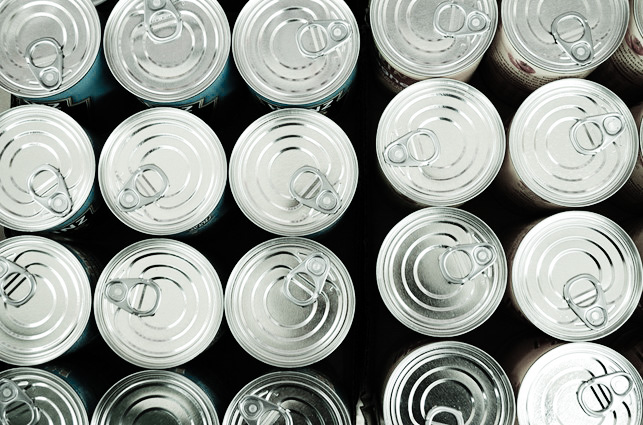
Producer responsibility for packaging
Companies subject to producer responsibility for Packaging must register in the producer register. After that you must report every year the quantities of packaging that you make available on the market in Denmark. Here you can read more about the rules for producer responsibility, who is covered, and how you register.
What is packaging?
Packaging means all products made of any materials of any nature to be used for the containment, protection, handling, delivery and presentation of goods from the producer to the user or the consumer. All disposable products used for the same purpose are also packaging.
The rules are the same
The regulatory mechanisms are fundamentally the same for all product groups covered by producer responsibility – both in Denmark and the EU. Therefore, the packaging sector follows the same principles regarding national registration and reporting obligations for the companies included, including requirements for financing schemes and achieving specified environmental goals.

Packaging
Are you subject to producer responsibility?
If you are the first one making packaging or filled packaging available on the Danish market, you have as a general rule producer responsibility for your packaging. Making available means that your company puts on the market/offers for sale packaging or packaged products to other companies or directly to a consumer with or without remuneration. Take a guiding test to see if your product is covered.
Check packagingMaking available is a key element of the producer responsibility system.
Packaging under own brand
If you are not a micro-enterprise and have packaging conceived and manufactured under your own name or brand, you will as a general rule have producer responsibility for that packaging. You may have your logo printed onto it, or you may have a specific packaging designed. You will have the producer responsibility, since you are the originator of the manufacture of the packaging. In this situation, therefore, it is not decisive who has made the packaging available on the Danish market.
Please note that other rules apply to micro-enterprises (see below).
Whether other brands are visible on the packaging (e.g. the logo of the manufacturer) is of no importance.
Special for micro-enterprises
With the producer responsibility for packaging the legislator introduces special exemption rules for micro-enterprises, in Denmark defined by the following criteria: less than 10 employees and a turnover not exceeding DKK 15 million/year. This does not mean, however, that micro-enterprises are automatically exempted from the rules on producer responsibility.
If a micro-enterprise has packaging manufactured in its own name and brand by a Danish subcontractor, the micro-enterprise will not have a producer responsibility.
If, by contrast, the micro-enterprise imports packaging from abroad, this micro-enterprise has the producer responsibility itself, since it is the micro-enterprise that makes the packaging available for the first time on the Danish market.
When must you register?
Existing companies subject to producer responsibility for Packaging must register no later than 31 August 2024. Companies starting business or starting to put products covered by producer responsibility on the market after 31 August must register no later than 14 days before starting to put these products on the market.
How to register
If you are covered, you must register in the national producer register. Use button Register for Packaging at the top of the page. Here you can also register more than one producer responsibility field.
Below you can find an outline of the information and practical issues you should note when registering.
Guide to registration
In order to log onto the producer register you must use MitID Erhverv similar to the site virk.dk. Your company administrator of MitID Erhverv must give you the right ”Producer responsibility: Business” so you can log onto the DPA registers.
Contact your MitID administrator and refer to this guideline:
MitID Erhverv for DPA-registers (Packaging)
If your company is established in Denmark, your CVR number (not the SE number) works as your unique identification and registration number. When you start the registration, the system will first transfer your information from CVR.
Therefore, make sure that your company information in CVR is up-to-date.
You yourself must enter contact person and other statutory information that does not appear in CVR. This may be, for instance, your website address, membership of compliance scheme, etc.
You must also state the type of packaging and packaging material for which you register.
A collective scheme is a company offering to assume various tasks on behalf of producers that are members in that scheme. In practice, the producer becomes a member of the collective scheme that will then make sure, among others, that data are reported to the producer register on behalf of the producer. If you wish to become a member of a collective scheme, you can select one or more in the registration process.
When you register your company, you must state how much packaging you have made available for each packaging category. This means that you must keep accounts of quantities of packaging made available. The first time you register a category you must state expected quantities for the present year.
If your packaging consists of several material types that cannot be readily separated, you must select the primary type for the entire weight of the packaging in question.
Packaging terms for registration
How to manage packaging after use and when it has become waste. The different packaging material categories must be broken down on three waste types in the producer register. See Ordinary packaging, Hazardous packaging, and Packaging in residual waste.
Packaging must be reported under these materials:
- Aluminium
- Glass
- Ferrous metal
- Food and beverage cartons
- Cardboard
- Paper
- Plastic (Including Expanded polystyren (EPS))
- Wood
*Food and beverage cartons must always be registered and reported regardless of material
Other materials than the above is not subject to producer responsibility in Denmark.
Packaging that – when it reaches its end of life – is expected to be sorted into material categories in view of recycling and recovery.
”Total packaging” is a term used in connection with the de minimis threshold for packaging. This special option arises, if you put less than 8 tonnes of packaging on the market a year. In this case you are below the statutory de minimis threshold. By registering or reporting your packaging quantities as “Total packaging” you do not need to break down the quantity on the different categories.
Packaging that cannot be recycled due to the state of the material (e.g. packaging for foodstuffs and composites) but that is not hazardous. Packaging in residual waste will normally be incinerated in a waste-to-energy facility and thereby be recovered.
Packaging where the material is contaminated due to the product it contained. Management of the packaging must therefore be carried out according to the guidelines for hazardous waste and dangerous substances. Waste may, for instance, be harmful to human health, harmful to the environment, highly inflammable, corrosive, or toxic.
Reusable packaging is packaging designed for being refilled or reused for the same purpose for which it was conceived. Producers of reusable packaging are expected to have to register in the producer register from 1 January 2025.
Also called budgeted quantities. When your company registers for the first time you must state the quantities of packaging that you expect to make available on the Danish market in the current year. In DPA we use the expected quantities placed on the market to calculate how large a quantity of packaging waste each company is responsible to manage either in practice through our allocation system or financially through a handling fee.
Environmental targets
All producer responsibility fields are covered by targets for collection of used products and materials per member state. Of these collected quantities there are furthermore minimum requirements for recycling and recovery of each material group, in percent by weight. These targets for recycling and recovery apply to each member state, and also to each business or compliance scheme subject to producer responsibility.
Percentage targets for recycling of packaging materials
| Material | Current targets (weight%) | Coming targets (weight%) - from 2025 | Coming targets (weight%) - from 2030 |
|---|---|---|---|
| All packaging | 55 | 65 | 70 |
| Plastics | 25 | 50 | 55 |
| Wood | 15 | 25 | 30 |
| Metal (ferrous) | 50 (incl. Al) | 70 | 80 |
| Aluminum (non-ferrous) | - | 50 | 60 |
| Glass | 60 | 70 | 75 |
| Cardboard | 60 | 75 | 85 |
| Paper | 60 | 75 | 85 |
Source: EUROSTAT and Packaging-directive 2018/852 |
Shortcuts
About registration
We expect registration can be made from april 2024. It is not possible to register for producer responsibility for packaging before this date
Marking of packaging
See marking requirements and codes to be used for packaging products
Packaging - legislation
See the statutory basis for producer responsibility for packaging
Minimum requirements
See legislation on future minimum requirements for all producer responsibility fields
European Registers
Find producer registers in other EU countries